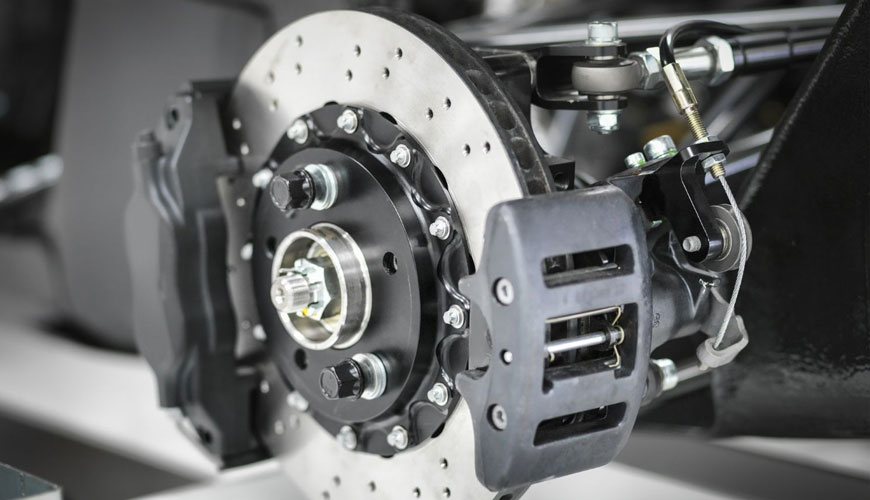

EUROLAB laboratory provides testing and compliance services within the scope of EN ISO 6579 standard. This International Standard specifies the test method for hydraulic brake systems of vehicles in categories M and N manufactured in accordance with ECE-R 13/09. Hydraulic brake systems include vacuum assisted and hydraulic assisted braking systems and full power hydraulic brake systems.

For tests carried out on vehicles with ABS, an area shall be provided consisting of a surface providing the highest adhesion coefficient (kpeak u 0,4) and large enough to allow the tests to be carried out safely.
Also, before and after this area should come a surface that provides a peak coefficient of adhesion of about 0,8 and is of sufficient length on the approach side to allow test velocities to be achieved.
For testing vehicles equipped with Category 1 or 2 ABS, a low tack surface must have a high tack surface on at least one side to allow split tack tests to be performed. Each surface must be large enough to allow the highest adhesion coefficient to be determined separately.
The deceleration measurements used in this procedure mean "average fully developed deceleration". On vehicles with manual transmission, during tests with the engine connected, the clutch can be disengaged just before the vehicle comes to a stop to prevent the engine from stalling. (MFDD) When referring to predicted efficacy, this is ECE Regulation No. 13 is the desired MFDD and stopping distance performance.
The use of pedal application machines or robots does not reflect real-life vehicle braking and should not be recommended.
Determining optimum vehicle braking performance should be entrusted to skilled test drivers. This should be done just before stopping and without locking the wheels without significant deflection caused by braking. Allow time to get used to the vehicle braking, steering and suspension systems.
The tests should be performed in the recommended order, although it is recognized that practical circumstances may warrant variations from this sequence. However, due to the thermal effect on friction material behavior, the fade test is performed at the end of the series and adhesion use tests should be performed before determining the corresponding k-factor.
EUROLAB, with its more than 25 years of experience, state-of-the-art accredited laboratories and expert team, helps you get precise and fast results.
To get an appointment, to get more detailed information or to request an evaluation, you can ask us to fill in our form and reach you.